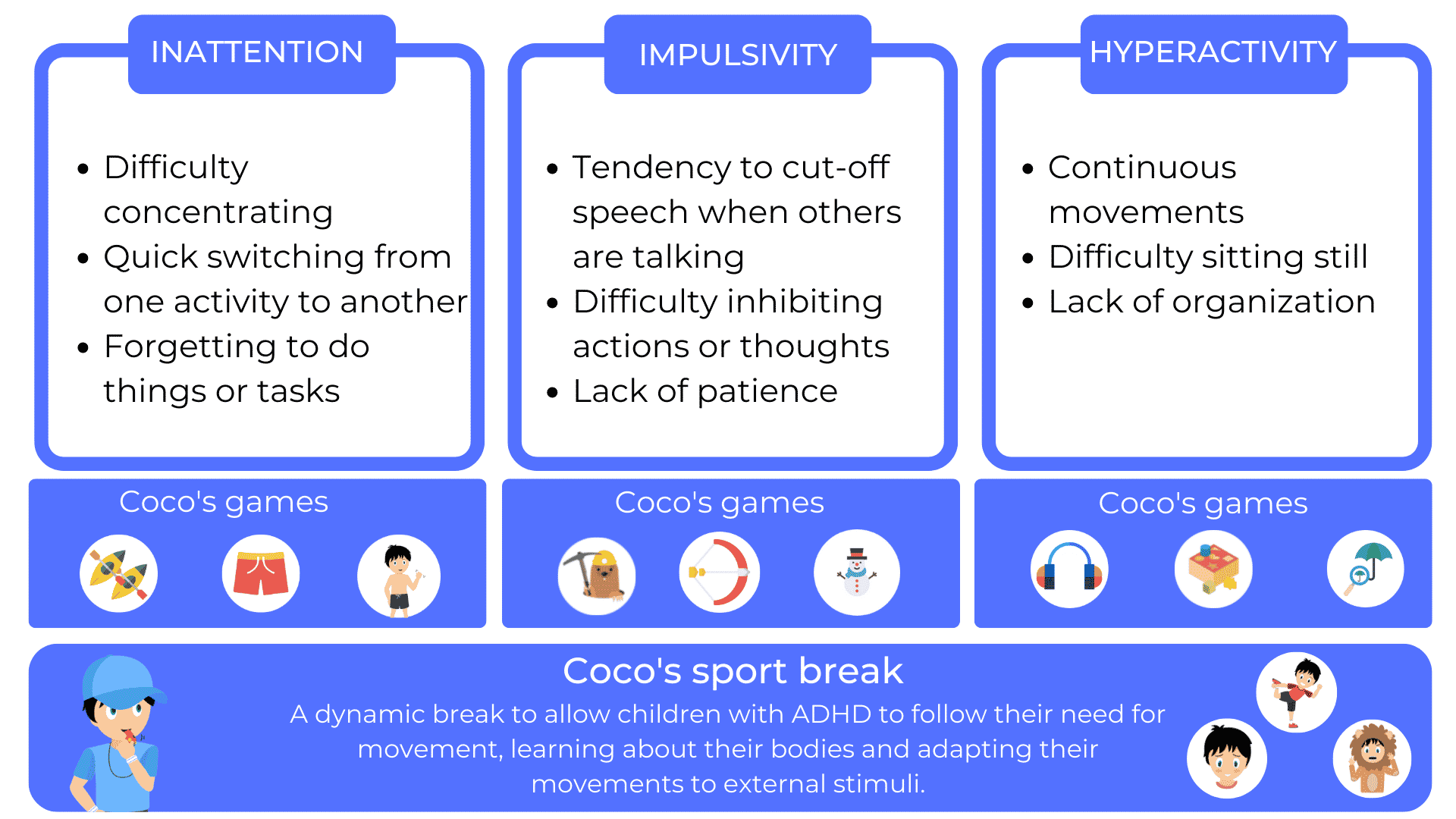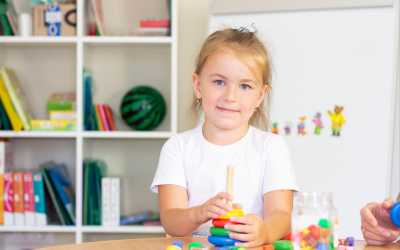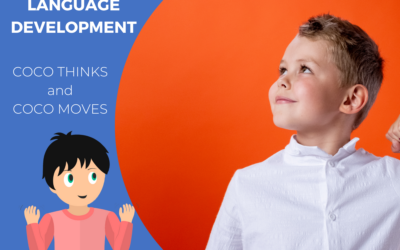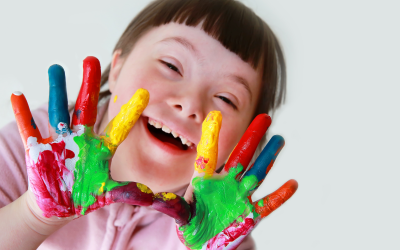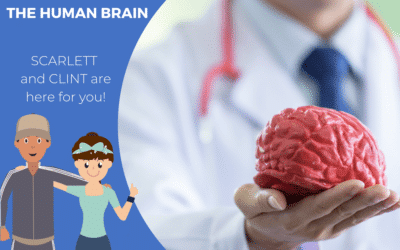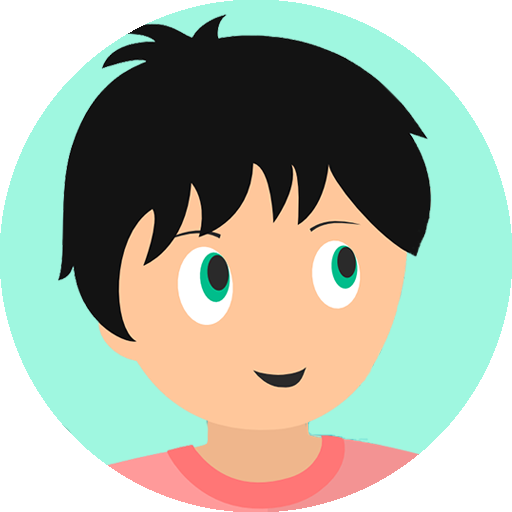A child’s environment can have a significant impact on his or her ability to manage the challenges associated with attention deficit hyperactivity disorder (ADHD). By creating a supportive environment at home, parents can help their ADHD children focus better, stay organized and develop healthy habits. This article will provide practical tips and detailed strategies for creating such an environment that promotes the well-being of ADHD children.
Organization of the space
A well-organized living space can help ADHD children focus and stay engaged in their activities. Here are some tips for organizing space at home to support ADHD children:
Dedicated work area
It is recommended that a specific work area be created for ADHD children. This area should be free of distractions, such as television or video games, and equipped with necessary supplies such as a desk, comfortable chair and school supplies. Design this space to be attractive and engaging, using bright colors and visual elements that stimulate focus and creativity.
Visual organization
Using visual aids such as shelves, storage boxes and labels can help ADHD children keep their space organized. The shelves can be used to store books, school supplies and games in an orderly fashion. Storage boxes, on the other hand, can hold toys or other items, and labels can indicate what’s inside. Encourage children to help organize by allowing them to choose the colors of the storage bins or decorate the labels. This gives them a sense of investment and responsibility in policing.
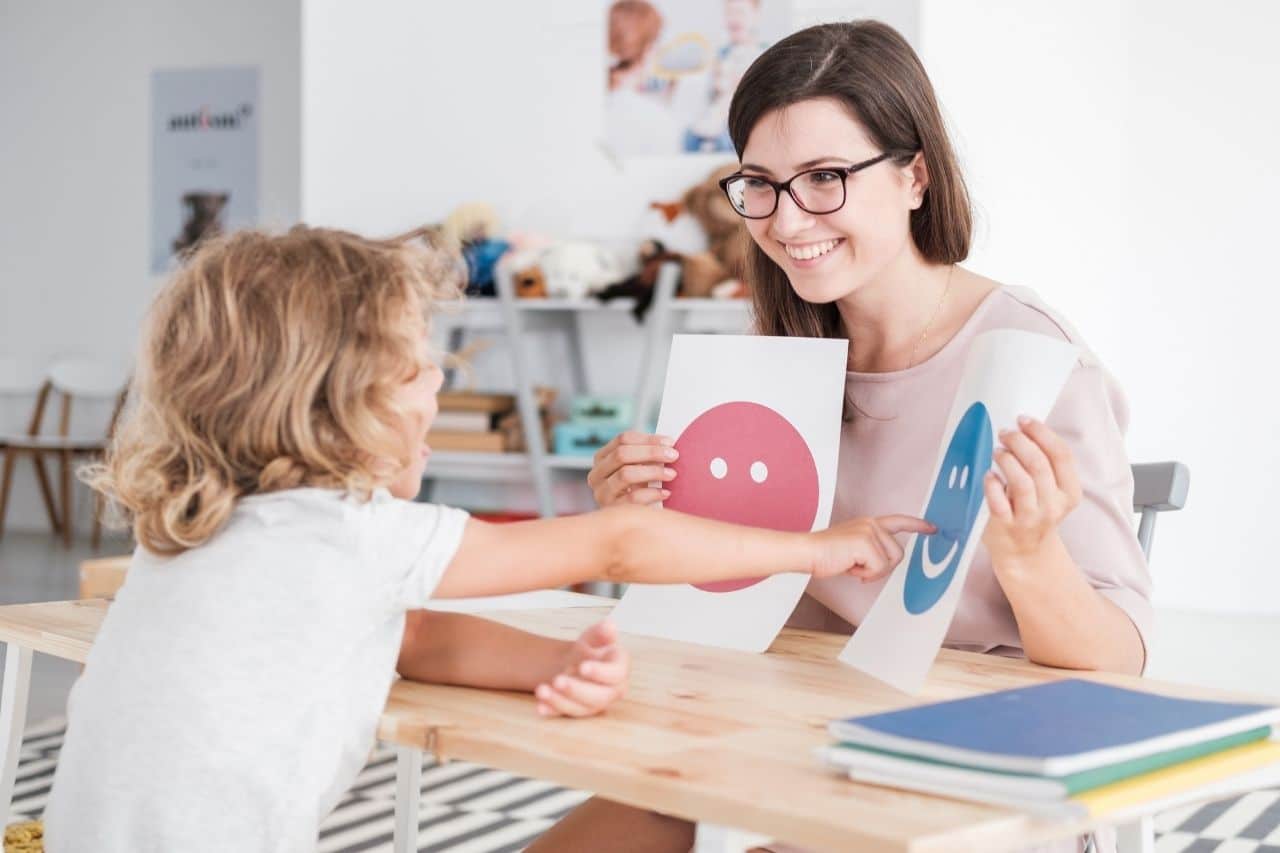
Minimization of distractions
Reducing visual and auditory distractions in the environment can help ADHD children focus more effectively. Eliminate distractions such as televisions on in the background or loud noises from other rooms. If necessary, use blackout curtains to block out outside light and sound barriers to reduce unwanted noise. Create a calm and soothing environment where the child can concentrate on his or her activities without being disturbed.
Structured routines
Structured routines provide a predictable and stable framework for ADHD children, which can help them manage their time and activities more effectively. Here’s how to establish structured routines:
Establish a daily schedule
Create a daily schedule with specific times for different activities, including meal times, school work periods, breaks and recreational activities. Post this schedule prominently around the house, preferably in the child’s work area, for easy reference. Be sure to include time for relaxation and play to help prevent over-stimulation and maintain balance between activities.
Use visual reminders and timers
ADHD children may have difficulty keeping track of time and schedules. Use visual reminders or timers to help them stick to the schedule. For example, you can use a visual clock with colored markers to indicate key times of the day, such as bedtime or homework time. Visual timers or mobile apps can be used to set time limits for activities, helping children manage their time independently.
Encourage planning and organization
Involve ADHD children in planning their activities by having them create to-do lists or calendars. This gives them a sense of control and responsibility over their schedule. You can also help them prioritize their tasks and set realistic goals. Encourage them to check off completed tasks or use stickers to track their progress. This reinforces their sense of accomplishment and motivation to continue with their routines.
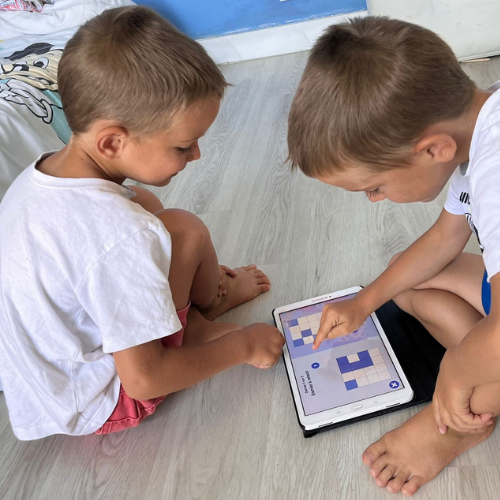
Strategies for managing clutter
ADHD children may tend to be disorganized and have difficulty managing clutter. Here are some strategies to help them manage clutter at home:
Simplify storage space
Opt for simple and practical storage solutions, such as storage bins or baskets, to keep essentials organized. Identify appropriate places to store toys, clothes, and school supplies, and help children understand where these places are.
Develop tidying habits
Teach ADHD children the importance of putting their things away after using them. Encourage them to get into the habit of putting away their toys, clothes and school supplies in designated areas. This can be facilitated by using labels, color codes or illustrations to indicate where each item should be stored.
Involve children in the organization
Involve ADHD children in the organization process by giving them specific responsibilities, such as tidying their rooms or sorting their clothes. Involve them in making decisions about the organization of the space and ask for their input on storage solutions or organizational systems. This fosters their autonomy and reinforces their commitment to the organization.
In conclusion, by creating a supportive environment for ADHD children at home, parents can help improve their attention, focus and overall well-being. By organizing space, establishing structured routines, and teaching strategies for managing clutter, parents can provide an environment for ADHD children to thrive. It is important to remember that each child is unique, so it may be necessary to adapt these strategies to the specific needs of each ADHD child. By implementing these practical tips, parents can support their ADHD children in their development and success at home.
Supporting ADHD children with the COCO THINK and COCO MOVE application
COCO THINKS and COCO MOVES is a program of educational and physical games for elementary school, in order to implement universal learning.
Children with ADHD have difficulty staying focused. It is therefore important to use games that work on theactivation or inhibition of movement, as well as games that require a specific response time.
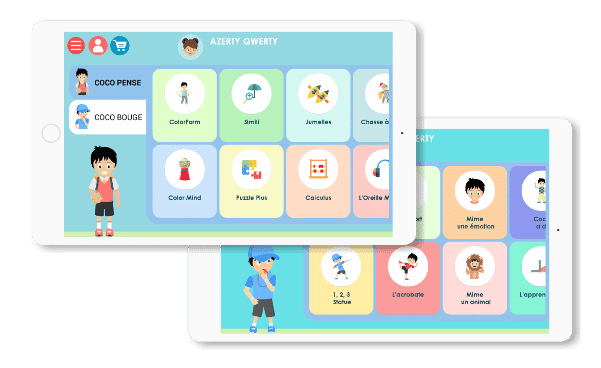
Adaptations of COCO THINKS and COCO MOVES for ADHD children
- Adapted physical exercises
- A personalized interface (possibility to hide games)
- Activities to teach body movement in space
- Activities for relaxation
- Activities that can be done sitting down
The mole invasion
In this game the child will see 3 different moles, and therefore 3 different stimuli. A normal mole he has to tap once, a mole with a helmet to tap twice and a mole with the glasses not to touch.
In this game we stimulate the activation and inhibition of the movement according to the stimulus. The child can learn to adapt to his environment, to take external information to choose which movement to make.
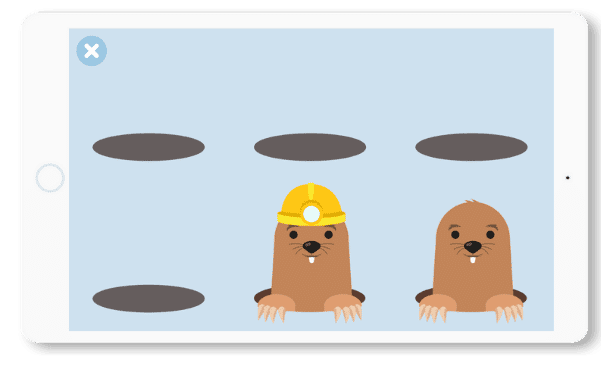
Balloon drill
In this game the child has to shoot arrows and reach the balloons according to the instructions.
In this game, there is no question of speed, but the child must watch the movement of the balloons and wait for the right moment to shoot. He must therefore stop his movement and wait for the best moment to shoot. The child must blow up only the balloons of one color, so it is very important to read the instructions carefully before starting to play.
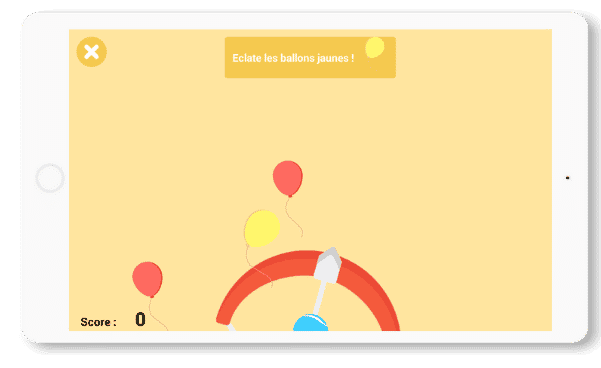
Snowball effect
In this game the child must press a single arrow to launch a snowball that must reach all the arrows on the screen. The child cannot quickly press the first arrow he sees, but must think carefully before acting. This game stimulates cause and effect, i.e. thinking about the consequences of an action.
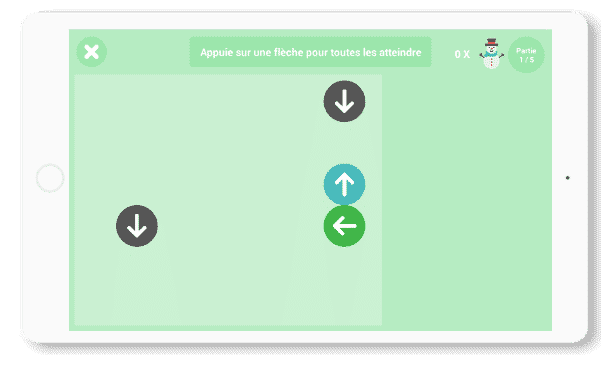
A follow-up of the evolution over time
In the application COCO THINKS and COCO MOVES there is a general score indicative of the performance, to know the level of competence. In addition, there are details on performance (time used to complete the activity, correct answers, movements needed and movements performed).
Children can see their strengths and areas for improvement:
if they need to improve their response time, strategy or skill, for example.
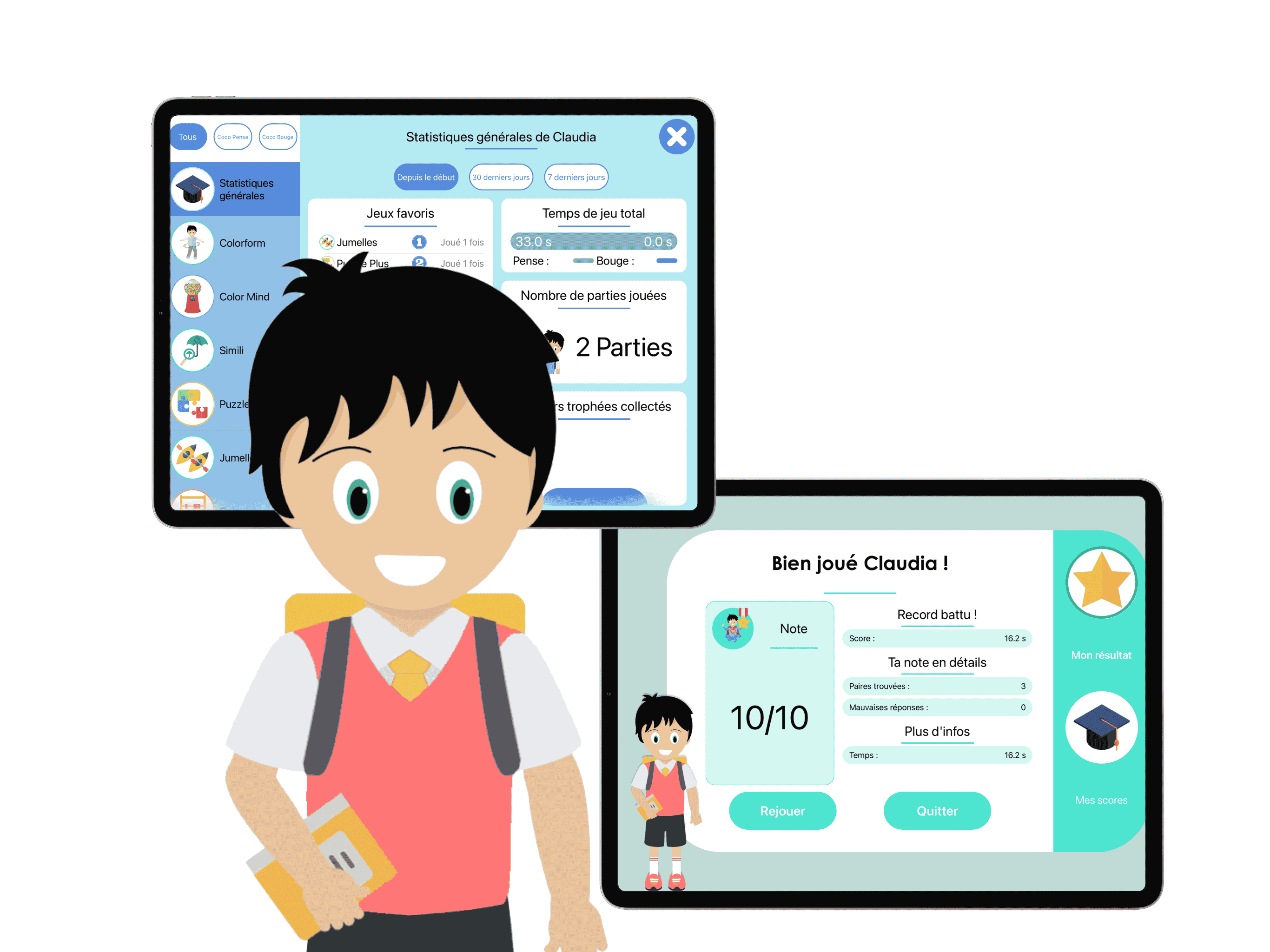
Other articles that might interest you:
Supporting children with autism
Dynseo proposesSUPPORTING CHILDREN WITH AUTISM with COCO THINKS AND COCO MOVESDynseo and its team are very much...
Supporting DYS children with COCO THINKS and COCO MOVES
Dynseo proposesDYS disorders with COCO THINKS and COCO MOVESOur educational and pedagogical games program COCO THINKS...
Language development
Children communicate from birth with movements, crying, looking at each other or with smiles. After only a few months,...
Supporting children with Down Syndrome with Coco
Dynseo proposesDOWN SYNDROME with COCODown syndrome is a non-hereditary chromosomal abnormality that leads to the...
Supporting people after a stroke
Dynseo proposesStroke with CLINT, your brain training coachThe Dynseo team is very involved in helping people who have...
Supporting someone with Alzheimer’s
In this guide, we will detail how SCARLETT can be used for supporting someone with Alzheimer's. SCARLETT is a...
10 myths about the human brain you didn’t know
The brain is an incredible muscle, however there are many things we do not know, and what we do know is not always...
Using Digital Tools to Support Students with Special Educational Needs
Special Educational Needs (SEN) encompass a wide range of learning difficulties and disabilities that can hinder a...
Down Syndrome and Communication: Facilitating Interaction with Visual and Interactive Supports
When we think about Down syndrome, we often recognize it as a genetic condition that affects physical and cognitive...
How to Track Progress in People with Down Syndrome Using Digital Tools
Down syndrome, a genetic condition caused by the presence of an extra chromosome 21, affects approximately 1 in every...


